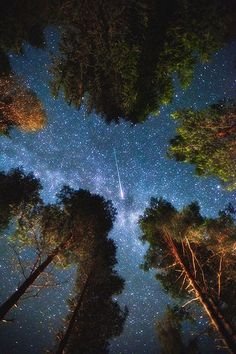When you gaze up at the night sky, it’s hard not to be captivated by the twinkling lights scattered across the darkness. These distant points of light are stars, the incredible powerhouses of the universe. But what exactly are stars, and why do they matter so much? Let’s take a journey into the heart of these celestial wonders.

What Are Stars?
Stars are massive, glowing spheres of hot gas, primarily hydrogen and helium. They generate light and heat through nuclear fusion, a process where hydrogen atoms combine to form helium, releasing a tremendous amount of energy. This energy is what makes stars shine so brightly, even from millions or billions of miles away.
Every star you see in the night sky is like our Sun, though they vary in size, color, and temperature. Some stars are much larger and hotter than the Sun, while others are smaller and cooler. The color of a star can tell you a lot about its temperature: blue stars are the hottest, while red stars are cooler.

The Life Cycle of a Star
Stars are born, live for billions of years, and eventually die. Their life cycle is one of the most fascinating processes in the universe.
- Birth of a Star: Stars begin their lives in massive clouds of dust and gas called nebulae. Gravity pulls the gas and dust together, forming a dense core. As the core gets hotter and denser, nuclear fusion ignites, and a new star is born.
- Main Sequence: For most of a star’s life, it remains in the “main sequence” stage, where it burns hydrogen into helium. Our Sun is currently in this stage and will be for billions of years to come.
- Red Giant: When a star exhausts its hydrogen fuel, it starts to burn helium, causing the star to expand and cool, becoming a red giant. In this stage, the star is much larger but cooler on the surface.
- The End: The death of a star depends on its size. Smaller stars, like our Sun, will shed their outer layers, leaving behind a hot core that becomes a white dwarf. Larger stars may explode in a supernova, leaving behind a neutron star or even a black hole.

Why Stars Matter
Stars are more than just beautiful lights in the sky; they play a crucial role in the universe. The elements that make up everything around us, including the oxygen we breathe and the carbon in our bodies, were forged in the hearts of stars. When a star dies, it releases these elements into space, where they become the building blocks for new stars, planets, and even life itself.
Without stars, there would be no planets, no life, and no us. Every atom in your body was once part of a star, making us all, in a way, children of the stars.

The Stars as Guides
For centuries, stars have been our guides, helping sailors navigate the oceans and inspiring countless myths, stories, and scientific discoveries. The constellations, patterns of stars in the sky, have been used by cultures around the world to tell stories, mark the seasons, and navigate.
One of the most famous constellations, the Big Dipper, can help you find the North Star, which has been a vital tool for navigation throughout history. Even today, stars continue to guide us, both practically and spiritually.

The Future of Stars
The stars we see today are just a snapshot of the universe’s history. Some of them may have already died, their light only now reaching us after traveling for millions of years. Meanwhile, new stars are being born, continuing the cycle of creation and destruction that has shaped the universe for billions of years.
As we continue to explore the stars, we unlock more of the universe’s secrets, learning not just about the cosmos but about our place within it. So next time you look up at the night sky, remember that you’re gazing at ancient, powerful beings that have shaped everything we know and continue to light our way.






